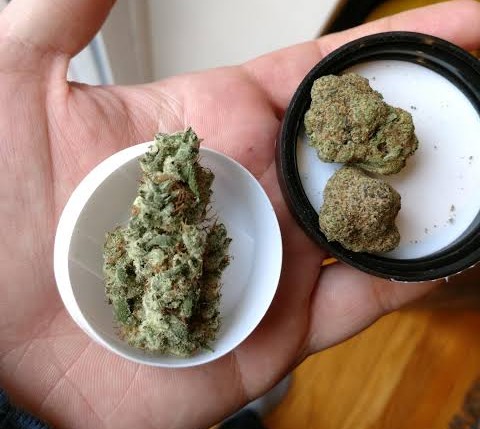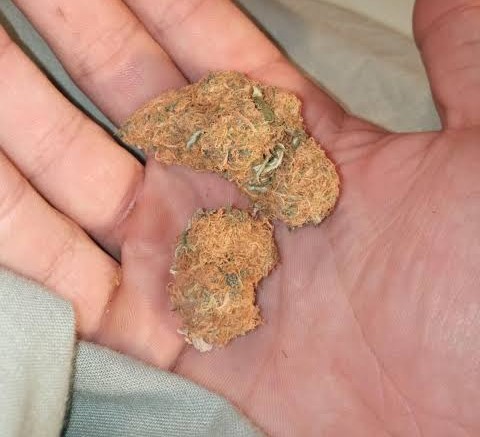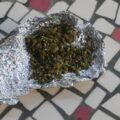
What is PGR Weed?
PGR weeds are marijuana or cannabis plants whose growth and development have been altered using plant growth regulators or PGR for short. Plants including cannabis require light, water, oxygen, minerals, and other nutrients for their growth and development. Apart from these external requirements, cannabis plants also depend on certain organic compounds to signal, regulate and control their growth.
Plant growth regulators (PGRs) are often applied to greenhouse cannabis to promote growth, increase branching, or promote or delay flowering. PGRs are also used to maximize weed production and the enhancement of other characteristics while stifling others.
The production and availability of marijuana products are increasing owing to the rising demand for medical weed from dispensaries and patients. To meet the rising demand, vendors are focusing on increasing their production. Moreover, governments across the world are taking initiatives to legalize the use of marijuana for medical applications.
However, PGR Weeds are dangerous for human consumption, because of the negative effect of synthetic plant growth regulators on the quality of the plant being grown. The cannabis plant contains more than 100 compounds (or cannabinoids). These compounds include tetrahydrocannabinol (THC), which is impairing or mind-altering, as well as other active compounds, such as cannabidiol (CBD).
According to the CDC, marijuana is the most commonly used federally illegal drug in the United States, with an estimated 48.2 million people using it in 2019.
Which PGR is used for Weed cultivation?
There are several PGRs used to boost the production of weed, the most common ones are:
Paclobutrazol
Paclobutrazol (PB) is one of the most successful and widely used in Weed cultivation. Paclobutrazol, a gibberellins inhibitor, has been effectively used in reducing canopy volume and increasing flower intensity. Paclobutrazol is effective not only in flower induction but also in early and off-season flower induction. Paclobutrazol impacts a plant cell’s ability to elongate, which in cannabis means cells pack much tighter and denser on the flower. It also hinders the development of key terpenes on the plant and reduces the ability of the plant to produce THC.
When buds which contain paclobutrazol are smoked, it breaks down into nitrosamines — the most carcinogenic compound found in cigarettes. Studies say paclobutrazol can negatively impact fertility, as well as cause liver damage.
Daminozide (Alar)
Daminozide (trade name Alar, Kylar, B-NINE, DMASA, SADH, B 995, and others) is a plant growth regulator, that makes harvest easier and enhances color. It was primarily used on apples and was registered with the Food and Drug Administration (FDA) from 1963 to 1989 — when it was voluntarily withdrawn by the manufacturer in response to public fears after a controversial study reported that Alar residue could produce tumors in mice.
Daminozide also decreases the production of terpenes, as well as cannabinoids like CBD, CBN, and THC. Basically, it severely restricts resin production in the plant overall, meaning fewer trichomes. Daminozide is listed as a probable human carcinogen by the EPA. It was banned in the U.S for use in consumable plants in 1999 because researchers showed it could be classified as a carcinogen in high doses. It’s been banned from human consumption since 1989 and has led to several agricultural recalls. Many synthetic PGRs have been similarly banned as further tests have been done. Researchers will not approve it for food products, and therefore it should NOT be smoked or ingested.
Chlormequat chloride
Chlormequat chloride is the first plant growth retardant (PGR) to be discovered. The chemical could be used as a drench to inhibit weed stem extension, increase stem thickness and increase leaf greenness. Chlormequat chloride is used to promote flowering or inhibit the extension growth of weeds grown in greenhouses, shade houses, and container nurseries.
Adding Chlormequat chloride to weed plants make their size much shorter and more uniform. Although there is no evidence that this PGR is carcinogenic, testing is still being done. There are reports of organ damage, along with skin and eye irritation, as a result of ingesting large amounts of it.

How to Spot PGR Weeds
Learning how to identify PGR weed can be a matter of life and death because PGR weed is bad for you and smoking or using it can result in health conditions that can be fatal. PGR weeds can be very difficult to differentiate from the naturally grown cannabis plant, nevertheless, there are signs and tips that may point you to the fact that a weed was grown using PGR, they include:
Leaf Crystals
Most PGR weeds lack crystals found on the leaf of a natural cannabis plant. Those crystals are called trichomes. They are the sticky glands that cover the flowers and some small leaves of the cannabis plant. Weed trichomes house the plant’s cannabinoids and terpenes. If you use a grinder to grind natural cannabis, you will notice a fine powder that collects at the bottom.
Poor THC content
PGR weeds generally have lower tetrahydrocannabinol (THC) levels because of the alteration in their natural growth and development pattern. The Drug Enforcement Administration (DEA) reports that the average THC potency of the marijuana seized in 2018 was around 15%. Now, it’s common to find cannabis flowers in state-legal dispensaries with more than 20% THC. One popular strain, Godfather OG, has as much as 34%.
Rapid Onset of High
Rapid onset of high that causes headaches and low energy levels could be a sign that you are using a PGR Weed. THC from weed moves from your lungs into your bloodstream and throughout your body. Within minutes, your heart rate may increase by 20 to 50 beats per. That rapid heart rate can continue for up to 3 hours. A normal marijuana high is associated with feelings of relaxation and contentment, though negative reactions are also possible.
Weed Texture
You can spot a PGR weed by feeling the texture of the weed. A Spongy wet feeling weed is an indication that you might be in possession of a PGR weed. Experts say the stickier the weed, the more potent the medicine. A 2019 study published in The Plant Journal found that the largest trichomes on a cannabis flower—those stalked trichomes we talked about earlier—contain the densest concentrations of THC, CBD, and terpenes on the entire cannabis plant.
Red Hairs
A common sign that a weed was grown with a PGR is the presence of brown or red hairs (pistils) and hard buds. They are less colorful than higher-quality bud, often darker with significant hues of brown. Natural premium marijuana should be perfectly manicured, nugget-like, colorful, deep orange pistils, with a frosty coating of trichomes.
Smell
A common characteristic of PGR weed vs natural ones is the lack of terpenes, along with their eventual degradation, resulting in a distinct lack of smell that has a harsh chemical taste. A natural weed boasts a pungent, skunky, and complex terpene profile.
Conclusion
As laws change, talking about marijuana use is slowly becoming more common. Some people are assessing its medicinal value, while others are looking for ways to flush it out of their system because of drug testing or a simple desire to get toxins out of their systems.
Weed has been associated with bronchitis, and it may be a risk factor for chronic obstructive pulmonary disease (COPD). Using PGR weed can be very dangerous because it can compound health problems.
This information is provided by Public health Nigeria for informational and Harm Reduction purposes. We do not promote smoking or other activities that are harmful to health. Harm reduction (THR) is a public health strategy to lower the health risks to individuals and the wider society associated with using tobacco products. It is an example of the concept of harm reduction, a strategy for dealing with the use of drugs. Tobacco smoking is widely acknowledged as a leading cause of illness and death, and reducing smoking is vital to public health.





